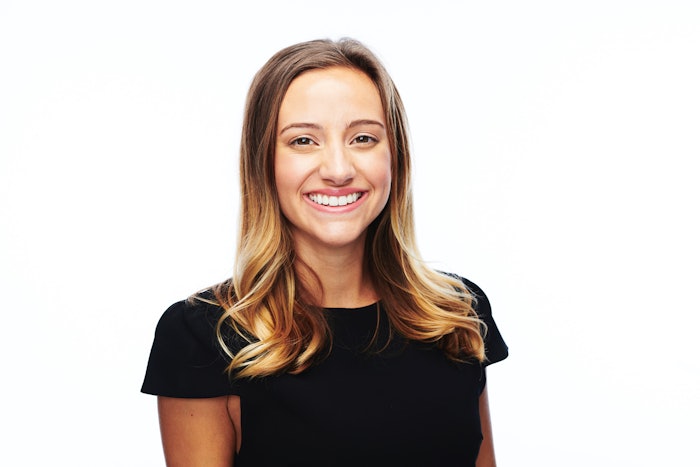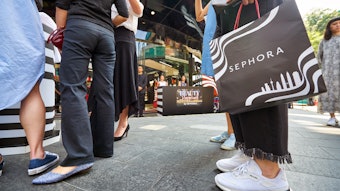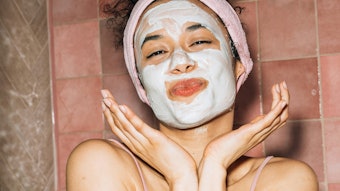
Cult Capital brand investor Christine Holcomb discovers the best and truest cult-brands. She easily identifies what makes the consumer tick and what trends are up-and-coming. Cult invests in growth-stage companies that have a strong foundation, a loyal customer base and products that have a meaningful impact on the world. It believes in consumer brands that have a passionate founder with a vision to lead the brand as well as differentiated products that change consumer lives for the better.
Investor interview: The Beauty Investors Speak Out
Investments to date have included Babo Botanicals, Supergoop! and Lawless Beauty.
Holcomb believes it’s important for a brand to understand who its customer is so they keep coming back for more—and make sure the brand isn’t sacrificing product quality and efficacy. In this exclusive interview, the executive shares the trends she has been spotting, like at-home innovation, and predicts the future of wellness will continue to be strong as consumers want to make choices that are healthy for themselves and the world. She also notes that we will likely see huge advancements in sustainability in 2022.
More from Nancy Trent: Rowi Singh: Passion + Consistency Win on Tik Tok
What kind of companies do you look to invest in?
[CH]: We invest in cult consumer brands that hyper-connect with their followers and have a fiercely committed and loyal customer base. Cult brands change the world by providing a product that otherwise would not exist; and if it did not exist the world would be worse off in a meaningful way. It is a product consumers cannot live without.
A cult brand derives its loyal following not just by virtue of the product being provided, but also the way in which the brand engages with its consumer. We seek to invest in growth-stage companies raising Series A or Series B rounds of funding that have a strong brand foundation and are looking to add fuel to the fire and super-charge growth.
What makes a company attractive?
[CH]: Brands that have a strong and passionate founder with a vision and mission that acts as the north star for the brand. For example, Supergoop! and Lawless Beauty. Brands that also have differentiated products that change consumers lives for the better with strong repeat purchase rates and a diversified marketing strategy.
What is a turn-off about a company?
[CH]: I want to be careful when I say ‘turn-off’ when talking about a growth-stage company. We see them as areas of opportunity because there is still ample amount of time to improve and evolve. At our stage of investing, we are testing for proof of concept and product market fit.
It is critical for a founder to have a deep understanding of why consumers are purchasing their product and what needs they are filling for their customers. The consumer landscape is hyper-competitive and crowded, so testing for these is critical to ensuring long-term and lasting success.
It all starts with understanding who your customer is. Most brands understand basic information like age range or geographic location, but what are their interests? Where do they shop? What brands are they shopping [for]?
Once you understand your customer, you should understand why your product is valuable to them and what their experience is with the product. Where can you double down and where is there an opportunity to improve? What is the product’s perceived value? Does it align with your current pricing? Why were they early adopters?
It is even great to test first time customers vs. repeat customers! Then you can understand why people come back again and again and how you can convert customers that were interested but did not come back.
Once you nail your existing customer base then you can use upper funnel awareness tactics to appeal to adjacent consumer groups. Ensure you have a diversified marketing strategy and strong storytelling when you go out to tell the world about your brand.
If you do not leverage traditional brand marketing levers this will put pressure on mid-funnel activities, such [as] digital advertising. This is critical for upper funnel awareness and creates a lasting brand.
What is most interesting to you about the wellness sector?
[CH]: We are excited about the skinification of hair and are partnered with a hair care brand, Act+Acre, who is a pioneer in this category.
Any tips on sprucing up an investor deck?
[CH]: An investor deck is a summary of your strategic plan, so treat it as the final step before kicking off a capital raise. This month we are talking about Cult Capital’s 10 key steps to prepare for a capital raise on our Instagram page.
Preparing an investor deck is the fifth step, so from our perspective there are four steps to complete prior to even thinking about putting together an investor deck. They are:
- Committing to raising capital
- Outlining your business plan
- Building a detailed financial model
- Defining your raise amount and UOP
The deck should act as a summary of all these steps. Once you put together your investor deck, go back through each page and make sure you can provide more detail on everything because there is a strong chance an investor will ask additional questions. We recommend drafting a ‘cheat sheet’ you can reference on calls and in meetings.
What makes you perk up when you hear it in an elevator pitch?
[CH]: I get excited when founders put a lot of thought into their formulations. I was on a call a few months ago and a founder told me she worked on product formulation for three years before launching the brand. How crazy is that? It showed me how passionate she is about the business and how thoughtful she is as a founder.
I also get excited when we hear from a brand founder that has a unique founder story. This is an exciting opportunity for brand storytelling and gets consumers attention. It is so important to have passion and drive outside of being an entrepreneur and achieving a successful exit.
From an analytical perspective, we love to hear that brands have strong repeat purchase rates. This shows that the product is effective and game-changing.
What trends have you been spotting?
[CH]: We are excited about at-home innovation. The idea of taking service-oriented beauty services such as hair coloring or nail care and making them easier to do at home is fascinating to us and cuts down time and money for the consumer.
Another interesting revival I am seeing in beauty is the idea of anti-aging. About four years ago, brands were coming under fire for using the term anti-aging, but now consumers from age 15 to 55 seem to be purchasing beauty products in pursuit of reversing the clock or preventing it from ticking. I think we will see this trend continue and clinical testing or expert endorsements will only become more important for brand success.
What do you predict will be the future of wellness?
[CH]: I think the definition of wellness continues to expand rapidly. Consumers are wanting to make choices that make them feel better and that no longer only applies to physical fitness or outward appearance. This also now applies to their conscience, as well. Consumers want to make choices that are healthy for themselves and the world. I think we will see huge advancements in sustainability this year and consumers will start to seek out brands that are ahead of the curve from a sustainability perspective. Consumers want to see brands that are made with recycled plastic and sustainable materials or brands that have a refillable component.
What changes should a brand make in this time of transition?
[CH]: Brands need to place a strong emphasis on upper funnel awareness. We see a lot of brands putting too much focus on digital marketing and sacrificing brand awareness. You can target the same consumer 50 times, but if you are not telling a good story and meeting them where they are then they are not going to convert.
What should wellness brands consider when seeking investors?
[CH]: There are a lot of better-for-you brands out there, but make sure you are not sacrificing product quality and efficacy. Consumers demand products that are at least as effective or as tasty as existing products on the market.
Why should a brand work with Cult?
[CH]: We are cult brand experts who invest in the rare and remarkable few allowing us to be true strategic thought partners to the companies we invest behind.
What do you offer that other investors do not?
[CH]: Our experience and network allow us to be a value-add thought partner to the brands we invest in. We help with marketing, team building, distribution strategy, operations, finance and exit optimization.










